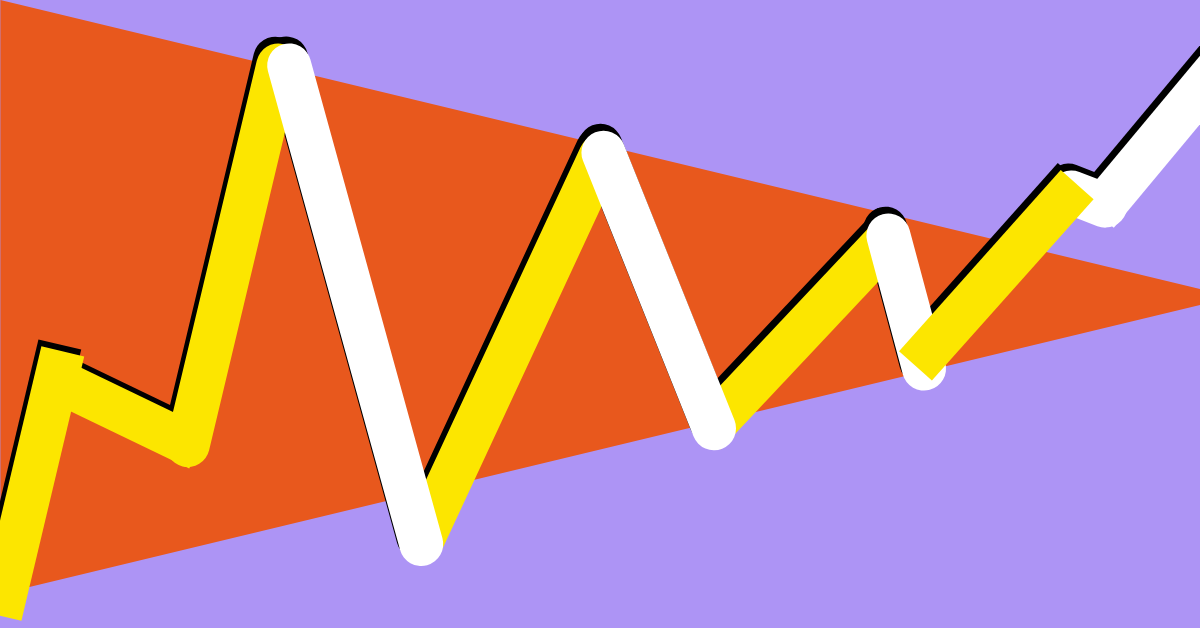
Have you ever watched a stock or crypto chart and felt like it was speaking a secret language? Well, you’re not alone. Patterns in charts tell stories about what’s happening in the market. And if you learn to read them, they can give you a serious edge in trading.
Today, we’re diving into two of the most powerful patterns: Ascending and Descending Triangles. These formations can help traders predict where the market is headed next. Whether you’re new to trading or looking to refine your skills, understanding these patterns is a must.
Imagine price movements drawing shapes on your chart. Triangles are one of the most common patterns, and they usually signal a breakout is coming.
Both patterns suggest that the market is gearing up for a breakout. The key is knowing which way it’s likely to go and how to trade it.
Think of an ascending triangle like a rising staircase hitting a ceiling. The price keeps knocking on that ceiling (resistance level), and each time, it comes back down—but not as low as before.
Here’s what you’ll see:
An ascending triangle suggests that buyers are gaining momentum. Even though the price keeps hitting resistance, it doesn’t fall as far each time. This means demand is increasing, and eventually, the buyers may have enough strength to break through the resistance.
Let’s say Bitcoin is trading in an ascending triangle. The resistance is at $50,000, but each dip goes higher—$45,000, then $46,500, then $48,000. Eventually, the price breaks above $50,000 with a surge in volume. This confirms the breakout, and traders jump in, expecting a rally to around $55,000 (if the triangle’s height is $5,000).
Now, flip the ascending triangle upside down. Instead of knocking on a ceiling, the price is bouncing off a floor—but each time, it falls from a lower high.
Here’s what you’ll see:
A descending triangle suggests that sellers are in control. Even though the price keeps bouncing off support, the sellers are pushing it lower each time. This weakens the support level, and eventually, it might break.
Imagine Ethereum is forming a descending triangle with support at $2,500. The highs keep getting lower—$3,200, then $3,000, then $2,800. Finally, the price breaks below $2,500, signaling a potential drop to around $2,000 if the triangle’s height was $500.
An ascending triangle is a bullish pattern, typically signaling an uptrend, while a descending triangle is bearish, indicating a potential downtrend. In an ascending triangle, the resistance level remains flat at the top, but the price forms higher lows at the bottom, showing strong buying pressure.
In contrast, a descending triangle has a flat support level at the bottom while lower highs form at the top, suggesting increasing selling pressure.
The breakout direction of an ascending triangle is usually upwards, whereas in a descending triangle, it tends to break downward. Recognizing these differences can help traders make informed decisions and position themselves accordingly.
Ascending and descending triangles are powerful tools in a trader’s arsenal. They give you a structured way to anticipate breakouts and manage risk. By combining these patterns with volume analysis and proper risk management, you can increase your chances of making profitable trades.
Next time you see a chart, look out for these triangles. They might just give you the edge you need to make smarter, more confident trading decisions.
Also read: Trading vs Investing: What’s the Difference and What’s Right for You?
An ascending triangle is a bullish chart pattern with a flat resistance level and higher lows, signaling an upward breakout when buyers gain strength.
Trade a descending triangle by waiting for a breakdown below support with high volume, entering short, setting a stop-loss above the last lower high.
Not always. False breakouts can occur, so traders confirm with volume analysis and other indicators before entering trades.
CoinPedia has been delivering accurate and timely cryptocurrency and blockchain updates since 2017. All content is created by our expert panel of analysts and journalists, following strict Editorial Guidelines based on E-E-A-T (Experience, Expertise, Authoritativeness, Trustworthiness). Every article is fact-checked against reputable sources to ensure accuracy, transparency, and reliability. Our review policy guarantees unbiased evaluations when recommending exchanges, platforms, or tools. We strive to provide timely updates about everything crypto & blockchain, right from startups to industry majors.
All opinions and insights shared represent the author's own views on current market conditions. Please do your own research before making investment decisions. Neither the writer nor the publication assumes responsibility for your financial choices.
Sponsored content and affiliate links may appear on our site. Advertisements are marked clearly, and our editorial content remains entirely independent from our ad partners.
SBI Ripple Asia has signed an agreement with Doppler Finance to explore new financial products…
Christmas week is here, and Bitcoin investors are waiting to see if the market delivers…
As 2025 comes to an end, the crypto market looks very different from last year.…
Avalanche’s AVAX token is trading at $12.24, marking a more than 60% drop in value…
In crypto markets, price does not always move in smooth trends. It often jumps in…
As investors look ahead to 2026, many are asking a basic question: Which altcoins have…